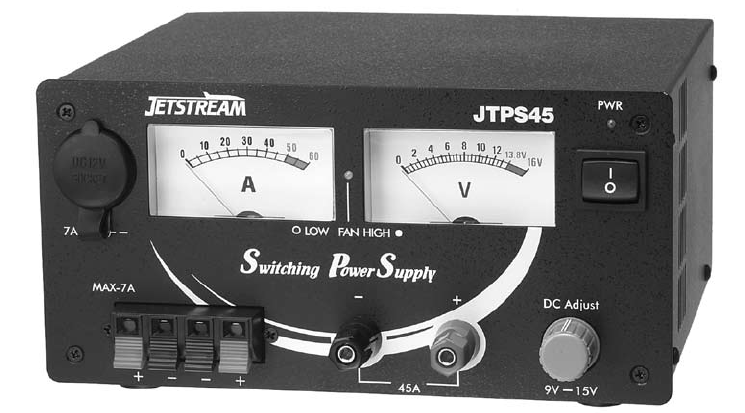Operating instructions

18 Choosing a Ham Radio
Running “barefoot” (without an amplifier) with a modest antenna is often sufficient for lots
of contacts, including world-wide DX during favorable conditions. More power, provided
by an amplifier, will extend your transmit range and enable you to maintain contact longer
as conditions change, but adds significant expense and raises the demands placed on station
equipment. Lower power, or QRP operating, is something you can try as you gain experi-
ence, turning the radio’s output power down whenever you’d like to give it a try!
A radio with a built-in ac power supply does not need an external dc supply. Most radios
do require an external dc supply, though. Be sure to select a power supply that is rated to
continuously provide the maximum current specified in the radio’s manual. Because most
radio accessories operate from the same voltage as the radio (13.8 V for most “12 V” radios)
it is wise to add a few more amperes of current output to power them. For example, if a radio
requires 24 amps at full power, choose a supply that can deliver 30 amps or more.
Filters & Receiver Performance
The HF bands are a challenging environment for receivers; signal strengths vary from
barely detectable to extremely strong. The bands are often crowded with strong signals.
The most important receiver characteristics are selectivity (the ability to reject unwanted
signals) and strong-signal performance.
Selectivity is created by filters with different bandwidths suited to the signal’s mode.
You’ll encounter radios that use discrete electronic crystal filters and software-based DSP
(Digital Signal Processing) filters. HF radios that use discrete filters will come with a
medium-bandwidth filter for SSB (about 2 kHz), an AM filter (6 kHz), and an FM filter (15
kHz). A CW filter (500 Hz) or RTTY filter (250-300 Hz) are needed if you expect to use
those modes a lot. Filters can be added after you purchase the radio.
DSP filters are created by software in the radio’s controlling microprocessors, reducing
or eliminating the need for separate electronic filters. The radio will come pre-programmed
with several common filter types. You can create new filter types and even adjust them
while you are using the radio.
The radio’s ability to operate properly in the presence of strong signals is measured pri-
marily in two ways; blocking dynamic range (BDR) and 3rd-order intercept point (TOI). In
both cases, higher figures are better. BDR in decibels (dB) describes the receiver’s ability
to ignore unwanted signals. TOI in dBm (a power level) describes the receiver’s reaction
Tooperatea100-watttransceiver,youneedapowersupplythatcanprovidethenecessary
current,typically30ampsormore.










